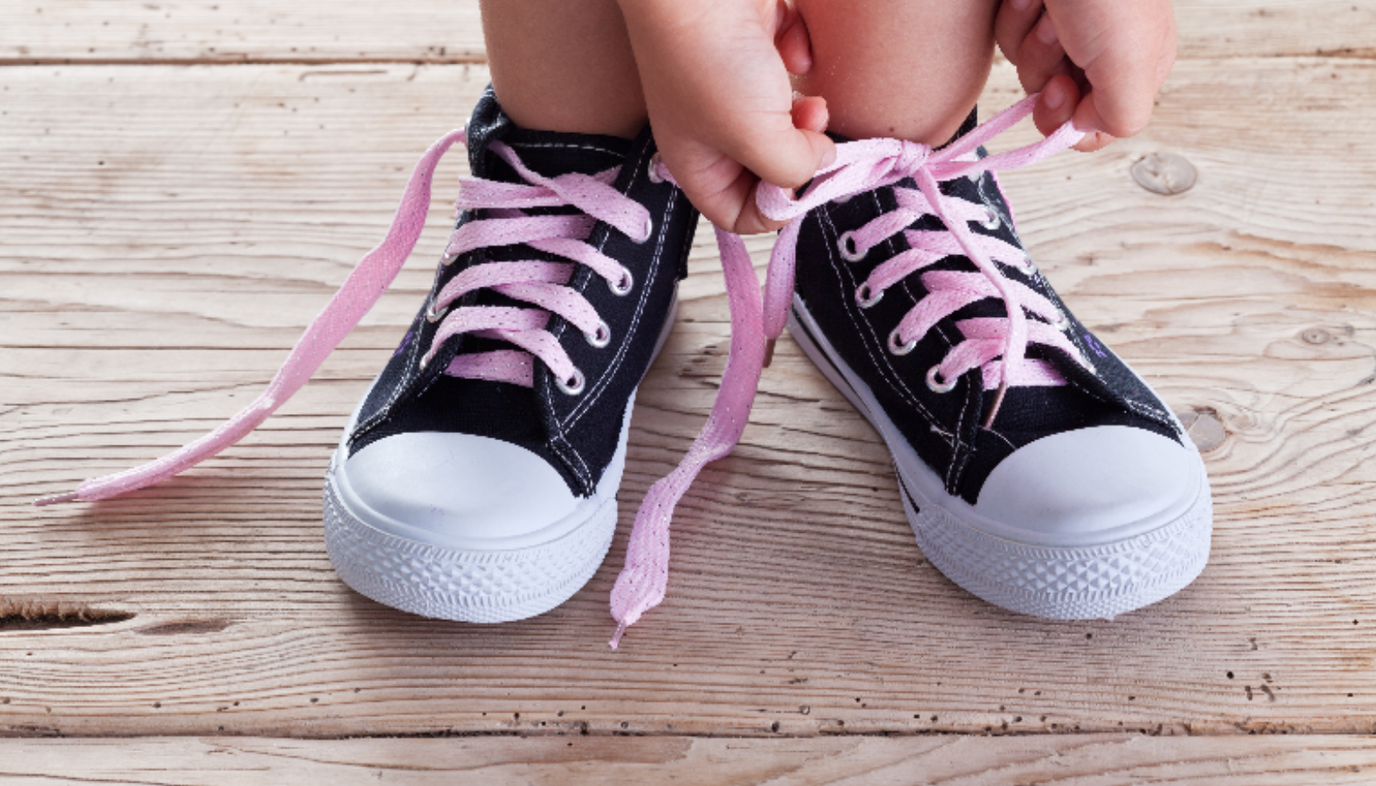Your child has been waiting for this moment; they may have been wearing lace-up shoes for a while, but in the past, you were the one to keep the shoes tied. Now it is time to help your child gain just a little step toward
greater independence. However, it can be intimidating to parents to be the one to help a child manage this task with tiny fingers that are still learning how to move in precise ways.
The best way to teach a child to tie his or her shoes is to slow down the way you tie your own shoes into discrete steps. Get your child a pair of shoes and you a pair of shoes to practice while sitting down at a table or in a chair. This way, they can begin forming the necessary muscle memory before they try tying a shoe that is already on their foot.
There are two main ways (and many small variations) on how to tie one's shoes. Here are two of the most common ways, starting with a particularly kid-friendly method and a later way that may be helpful in later years when a child notices that you don't use the bunny ears method yourself.
Bunny Ears
One of the easiest and friendliest ways to learn to tie shoes is the "bunny ears" method, which involves few steps and thus is less likely to frustrate children. By helping them to see that the loops they make look a little like bunny ears, you can help the child to smile and be a little more relaxed as their fingers learn to do this somewhat complex and dexterous task.
Show the child how to pinch each shoelace into a loop, or bunny ear.
Show them how to lay one bunny ear over the other and pull it under to form a knot.
Pull the bunny ears tight.
Another Method with Steps
Most adults do not tie their shoes with the bunny ear method, so it is also an option to show your child the typical way you tie your shoes, broken into steps. One example would be this one:
Loop one lace around the other, forming a loose knot.
Pull one lace into a loop, and hold it steady with your finger.
Wrap the other lace around the loop and pull the middle of that lace through the hole beneath the loop.
Pull the new loop and the old loop tight, forming a bow.
If you want to teach children how to form a double-knot, which tends to be very secure but can make it a pain to take shoes off and on, they essentially make a "bunny ears" knot on top of the original tied shoelaces.
Making a Dexterity Tool
If you think your child will struggle with shoe-tying, you can make them
a toy that will give them lots of practice. Find a shoelace and a piece of cardboard first.
Cut the cardboard, using the child's shoe as a model, to be the shape and size of the top of the shoe. Use a sturdy hole punch to punch holes in approximately the same places on the cardboard as there are holes on the top of the shoes. With this tool, demonstrate one or two times to your child how to lace the string back and forth through the entire cardboard, and then how to tie the shoe.
Take the cardboard with your child when you know there will be some waiting time, like a dentist or doctor appointment. The child will grow in confidence while also being entertained and focused during a time when they might otherwise get bored!
Living With Knots
Most likely, an annoying part of this season will be when a mistake results in a very tight knot on your child's shoelace. There is a chance they won't tell you about the problem until they've tugged on it quite a bit. You'll want to try with your fingernails first, but it is also a great idea to keep a tool with you to help. If you practice any kind of needlecraft, a dull yarn needle, a knitting needle, or a crochet hook are all helpful for loosening a child's knotted shoelaces enough to undo them with your fingers. Carrying one or more of these items in your purse or pocket may be a helpful way to not be as frustrated while your child goes through this very natural time in their development.
However you decide to teach your son or daughter to tie his or her shoes, make sure you give lots of time to practice, support when it is difficult, and praise when they accomplish it. Try to enjoy getting to teach your child about this important and exciting new step; soon they will be quite independent and not want to learn so readily, so this can be a really lovely stage.



